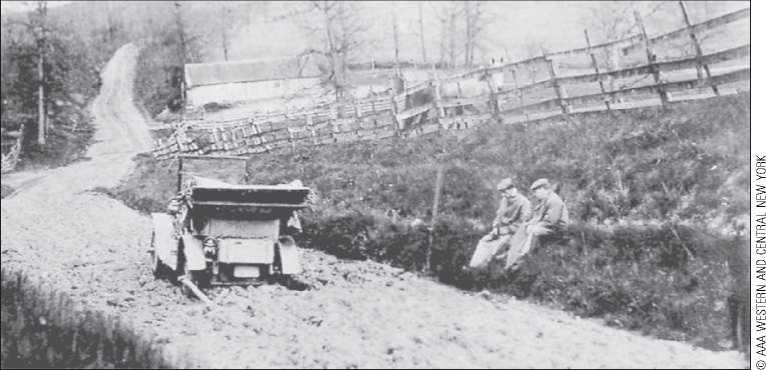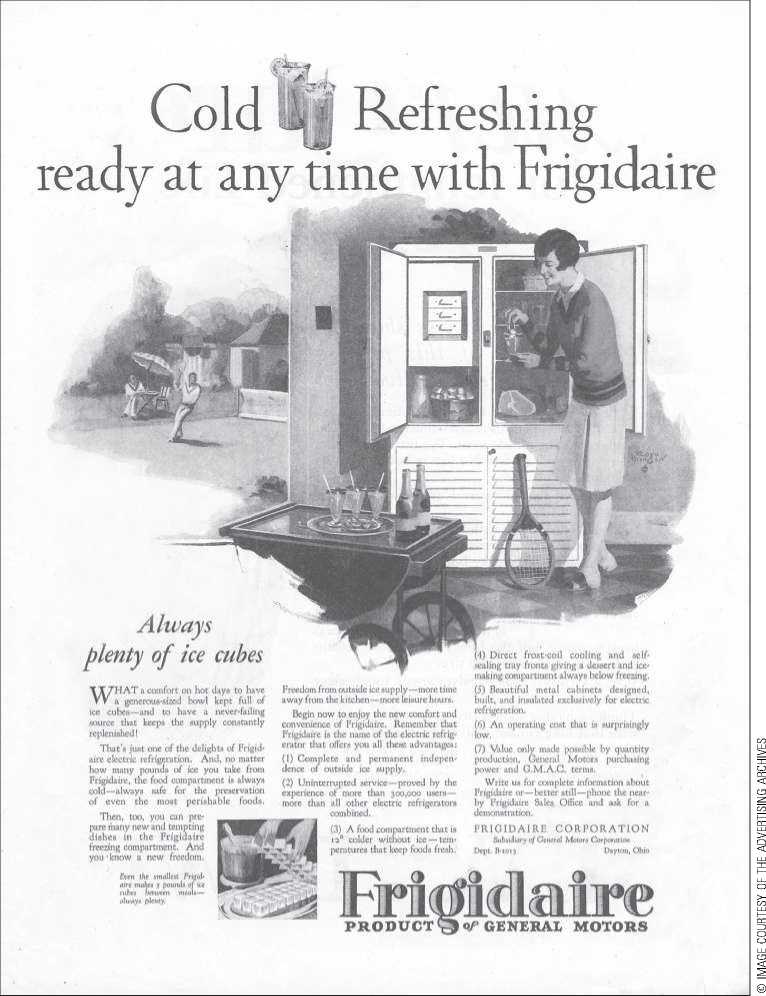Another growth sector was electric appliances such as ranges, vacuum cleaners, radios, and refrigerators. Over the decade, annual refrigerator production, for example, expanded from 5,000 units in 1920 to nearly 1 million units in 1930. Although only 8 percent (see Table 22.1) of American families relied on mechanical refrigeration in 1930, the days of the “ice man” were numbered. Perhaps most spectacular was the rapid adoption of the radio. In 1920, when station KDKA in Pittsburgh became the first to broadcast commercially, radio was still a toy for the gadget minded; by the end of the decade, 40 percent (see Table 22.1) of American families owned radios, which had transformed the cultural and political life of the nation.
The growth in the market for consumer durables was brought about by developments on both the supply side and the demand side. Mass production and technological advances lowered the cost for a given quality of service of many consumer durables. Henry Ford, for example, had pioneered the mass production of low-cost automobiles using the moving assembly line before the war. In the twenties, to meet stiff competition from General Motors, he introduced improved models that incorporated the self-starter, the windshield wiper, and improved brakes.
to the work of Martha Olney (1991), we now know that important developments also occurred on the demand side. One was the development of consumer credit—“buy now, pay later.” Rather than saving up cash or interest-earning assets to buy a consumer durable, a consumer could make a down payment, take immediate possession of the

When Americans driving their new cars ended up stuck in the mud, they launched a national roadbuilding program.
Durable, and pay for it on the installment plan. The finance company that made the loan was protected because it had a claim on the durable and could repossess it if the buyer failed to make the requisite payments. Originally, automakers established finance companies to help dealers purchase cars for inventories during the slow seasons and thus smooth the annual demand for automobiles. But the practice was quickly extended to the financing of automobile purchases by consumers.
The purchase of consumer durables was also promoted by the rapidly growing volume of advertising, which touted the benefits of the new lifestyle based on time and labor-saving consumer durables and pointed out how these improvements in one’s standard of living could be realized immediately by buying on the installment plan. Advertising relied on newspapers and magazines, particularly those aimed at women, such as the Ladies Home Journal, but some advertising also relied on the new medium of radio. The National Broadcasting Company (NBC) was formed in 1926, and the Columbia Broadcasting System (CBS) in 1927. Polling systems by telephone were used to determine program ratings, and programs with low rating were canceled. Certain goods became tied to particular programs as producers sought any and all means to address the desires, fads, and fancies of the American public.
Government policies toward business did not cause these fundamental changes in the consumption patterns of Americans, but they did accommodate them. In the 1920s, the administrations of Presidents Warren G. Harding and Calvin Coolidge were openly dedicated to the principle that business should be free to grow without government’s meddling or interfering. With little hindrance from government, businesses became even more consolidated than in earlier decades. Secretary of Commerce Herbert Hoover, among others, encouraged consolidations for reasons of efficiency; competing firms were allowed to form trade associations, not just to standardize tools and share technical information but also to set prices. Both Harding and Coolidge appointed men to the Federal Trade Commission who had little intention of enforcing the antitrust laws, either in letter or in spirit. As the years passed, banking, manufacturing, distribution, electronics, iron and steel, automobiles, and mining all became increasingly controlled by large conglomerates. Mass consumption, mass production, and the giant corporation thus became the trademark of the 1920s.

Mass production of consumer durables, often purchased with credit, characterized the boom of the 1920s.




 World History
World History









